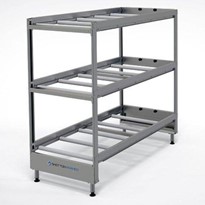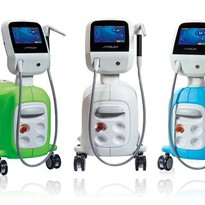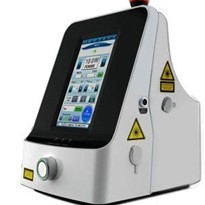Featuring Ellex’s proprietary coaxial reflex illumination technology, the Ultra Q™ is indicated for capsolutomy, iridotomy, and Nd:YAG laser membranectomy.
Since first entering the photodisruptor laser market in 1988, Ellex has secured the leading market position, supplying over 50 percent of the global market.
According to Ellex CEO Tom Spurling, the introduction of the new-generation Ultra Q™ will cement the Company’s strong position in order to support future sales growth.
“The Ultra Q has always been considered to be the industry’s leading microsurgical YAG laser.”
“With the introduction of Ellex’s Reflex light delivery system, our ophthalmologist customers can now use the Ultra Q to treat floaters in a medically-reimbursable procedure, known as YAG laser vitreolysis,” said Mr. Spurling.
Whilst there are several YAG lasers on the market, none are designed specifically for the treatment of floaters.
“The Ultra Q is optimised for performing YAG laser treatments both in the anterior segment and posterior segment – making it ideal for the all conventional YAG laser treatments such as capsulotomy and iridotomy, as well as YAG laser vitreolysis for the treatment of floaters,” added Mr. Spurling.
Ultra Q for Nd: YAG Laser Vitreolysis
Floaters (vitreous strands) are small bundles of collagen fibers located in the eye’s vitreous, which cast visual shadows that impede quality of vision. Often considered benign, they are a result of degenerative vitreous syndrome (DVS; the natural breakdown and clumping of collagen in the vitreous) and posterior vitreous detachment (PVD; the age-related separation of the vitreous from the retina).
To date, surgical removal of the vitreous (vitrectomy) has been the standard approach to the treatment of floaters. Highly invasive, the procedure carries a significant risk of complications, such as infection, retinal detachment, macular edema, anterior vitreous detachment and residual floaters.
According to floater expert James H. Johnson, MD, Vitreous Floater Solutions, Irvine, USA, Nd:YAG laser vitreolysis offers a quick, non-invasive treatment alternative. During the office-based procedure, a YAG laser is used to deliver short bursts of energy into the eye, breaking up the collagen fibers in floaters. Adoption of this procedure has been limited, however, due to technology constraints: the application of high-energy laser within the vitreous can pose a risk of damage to surrounding ocular tissue and additional safety concerns, including raised intraocular pressure and retinal damage or detachment.
A recent study by Gerbrandy et al, presented at the ESCRS Winter Meeting in 2011, found YAG laser vitreolysis to be effective and safe, and recommended it as a first-line treatment option for vitreous floaters.
The Ultra Q’s proprietary slit lamp illumination tower design converges the operator’s vision, the target illumination and the treatment beam onto the same optical path, and focuses them onto the same optical plane as the treatment beam – making the Ultra Q™ ideal for the treatment of floaters.
Ultra Q for Capsulotomy
In cataract surgery the eye’s natural lens, which has become cloudy over time (the cataract) is replaced with an artificial lens. Posterior Capsular Opacity (PCO), commonly referred to as “secondary cataract”, occurs when the thin membrane behind this artificial lens becomes hazy, resulting in blurred vision.
Posterior Capsulotomy is the standard treatment option for PCO. During treatment, a YAG laser is used to create a small hole in the posterior capsule (the membrane behind the lens) to remove the posterior capsule opacity.
The Ultra’s state-of -the-art YAG technology, featuring an Ultra Gaussian pulse with a short pulse of no more than four nanoseconds with high peak energy, and fast rise time, which allows the energy delivered to reach the optical breakdown threshold more quickly, enables capsulotomy treatment to be performed with fewer shots and less cumulative energy.
Ellex will launch the new Ultra Q™ at the AAO in Chicago from 10 November 2012, exhibit #3804. Market release will commence over the coming months.
- Suppliers
- New to MedicalSearch? Book a Demo
- Advertise with us
- Login
- Email Marketing
- Buyers
- Get Quotes
- Articles & Ideas
- Login
- Subscribe to newsletter
- My Details
- Get Quotes
- Accident & Emergency Care
- Aged Care & Disability
- Anaesthesia & Respiratory Care
- Beauty & Wellness
- Cardiology & Cardiac Surgery
- Commercial Cleaning & Laundry Supplies
- Dental Care & Oral Surgery
- Diagnostic Instruments & Medical Imaging
- Disinfection & Sterilisation
- ENT & Audiology
- Gynaecology & Obstetrics
- Homecare & Consumer Medical
- Hospital Equipment & Supplies
- Intensive Care Unit
- Laboratory & Pathology
- Medical Apparel
- Medical Devices & Products
- Medical Fridges & Freezers
- Medical Storage & Filing
- Medical Waste Management
- Optometry & Ophthalmology
- Orthopaedics & Podiatry
- Paediatrics & Neonatology
- Patient Monitoring & Management
- Physiotherapy & Rehabilitation
- PPE & Infection Control
- Single Use Medical Consumables
- Surgical Tools & Supplies
- Treatment Beds, Tables & Couches
- Veterinary Equipment
- Wheelchairs & Mobility Aids
- Get Quotes
- Accident & Emergency Care
- Aged Care & Disability
- Anaesthesia & Respiratory Care
- Beauty & Wellness
- Cardiology & Cardiac Surgery
- Commercial Cleaning & Laundry Supplies
- Dental Care & Oral Surgery
- Diagnostic Instruments & Medical Imaging
- Disinfection & Sterilisation
- ENT & Audiology
- Gynaecology & Obstetrics
- Homecare & Consumer Medical
- Hospital Equipment & Supplies
- Intensive Care Unit
- Laboratory & Pathology
- Medical Apparel
- Medical Devices & Products
- Medical Fridges & Freezers
- Medical Storage & Filing
- Medical Waste Management
- Optometry & Ophthalmology
- Orthopaedics & Podiatry
- Paediatrics & Neonatology
- Patient Monitoring & Management
- Physiotherapy & Rehabilitation
- PPE & Infection Control
- Single Use Medical Consumables
- Surgical Tools & Supplies
- Treatment Beds, Tables & Couches
- Veterinary Equipment
- Wheelchairs & Mobility Aids
Trusted by 520,000 Australian medical buyers
Buyers
- Discover products & solutions
- Login
- Subscribe To Newsletter
- Browse All Products
- Read Articles
Suppliers
Advertise
- Promote your products & solutions
- New to MedicalSearch? Book a Demo
- Login / Forgot Password
- Advertise Your Products
- Success Stories
- Email Marketing
- Suppliers
- Advertise with us
- Login
- Email Marketing
- Buyers
- Get Quotes
- Articles & Ideas
- Login
- Subscribe to newsletter
- My Details
Get Quotes
- Accident & Emergency Care
- Aged Care & Disability
- Anaesthesia & Respiratory Care
- Beauty & Wellness
- Cardiology & Cardiac Surgery
- Commercial Cleaning & Laundry Supplies
- Dental Care & Oral Surgery
- Diagnostic Instruments & Medical Imaging
- Disinfection & Sterilisation
- ENT & Audiology
- Gynaecology & Obstetrics
- Homecare & Consumer Medical
- Hospital Equipment & Supplies
- Intensive Care Unit
- Laboratory & Pathology
- Medical Apparel
- Medical Devices & Products
- Medical Fridges & Freezers
- Medical Storage & Filing
- Medical Waste Management
- Optometry & Ophthalmology
- Orthopaedics & Podiatry
- Paediatrics & Neonatology
- Patient Monitoring & Management
- Physiotherapy & Rehabilitation
- PPE & Infection Control
- Single Use Medical Consumables
- Surgical Tools & Supplies
- Treatment Beds, Tables & Couches
- Veterinary Equipment
- Wheelchairs & Mobility Aids
Get Quotes
- Accident & Emergency Care
- Aged Care & Disability
- Anaesthesia & Respiratory Care
- Beauty & Wellness
- Cardiology & Cardiac Surgery
- Commercial Cleaning & Laundry Supplies
- Dental Care & Oral Surgery
- Diagnostic Instruments & Medical Imaging
- Disinfection & Sterilisation
- ENT & Audiology
- Gynaecology & Obstetrics
- Homecare & Consumer Medical
- Hospital Equipment & Supplies
- Intensive Care Unit
- Laboratory & Pathology
- Medical Apparel
- Medical Devices & Products
- Medical Fridges & Freezers
- Medical Storage & Filing
- Medical Waste Management
- Optometry & Ophthalmology
- Orthopaedics & Podiatry
- Paediatrics & Neonatology
- Patient Monitoring & Management
- Physiotherapy & Rehabilitation
- PPE & Infection Control
- Single Use Medical Consumables
- Surgical Tools & Supplies
- Treatment Beds, Tables & Couches
- Veterinary Equipment
- Wheelchairs & Mobility Aids
Trusted by 520,000 Australian medical buyers


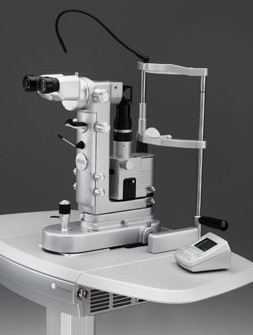




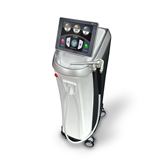




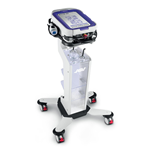
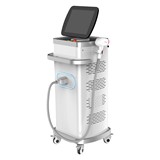




-205x205.jpg)
-205x205.jpg)
